What we can learn from old books
Hint: It's not what you think it is.
As I work my way into the final stages of Clay Bodies, I keep finding more I’d like to write about. It all relates back to the people in the book, but there are side stories that deserve their own limelight.
I have a number of old books that belonged to my grandmother and grandfather, but I’m not reading the text; rather, I’m reading the liner notes. Recently I was going through the family belongings that she my mom keeps in an old wooden chest that belonged to her parents. One of the things we came across was an old address book. Aha, I thought, I can see who they kept in contact with. That itself was illuminating, but the real treasure is all of the kid handwriting in the book, my grandmother’s doodles (likely while on hold?) and all sorts of notes written in the margins and on the inside of the covers, front and back. The way she took notes right across the pages of the book, on the diagonal.
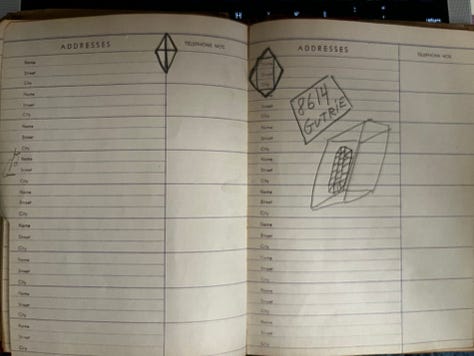

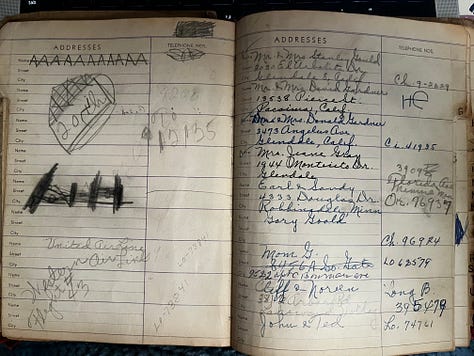


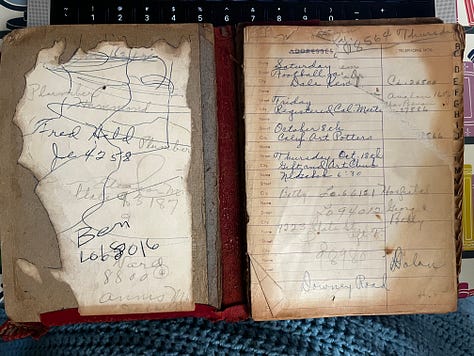
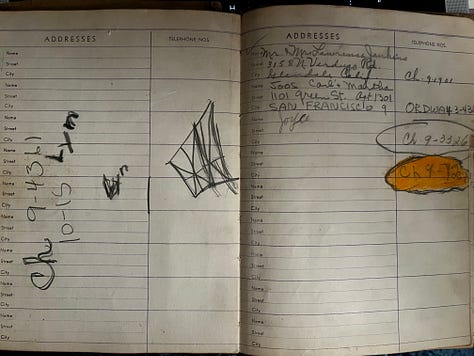


It brings to life all the evidence of a life. Most of us just naturally do these things—doodle when we’re bored, write outside of the margins and across the page—and then, if you’re like me, you look at it and think, “I’ll have to get a new address book now and start from scratch, rewrite it all in my neatest handwriting.” But now I have a different perspective. Like hieroglyphics, or ancient scrolls, they are things to be studied for clues to how people lived.
One night recently I had the thought to look at my grandmother’s old cookbook. I inherited several when my mom moved in because she didn’t have the shelf space for them. I was waiting for the microwave and had the thought that if my grandmother wrote in the margins of the address book, I wonder what the cookbook looked like.

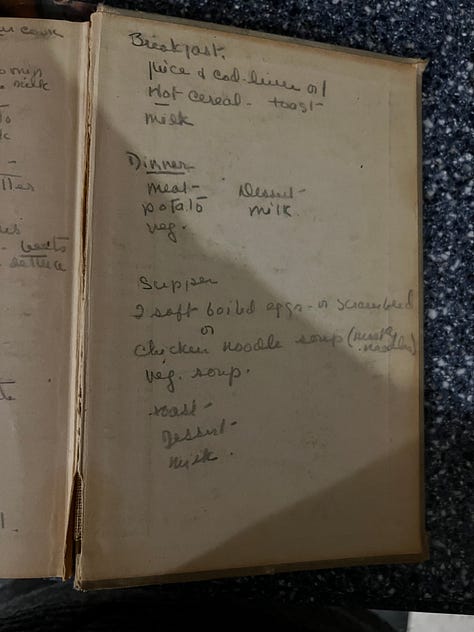

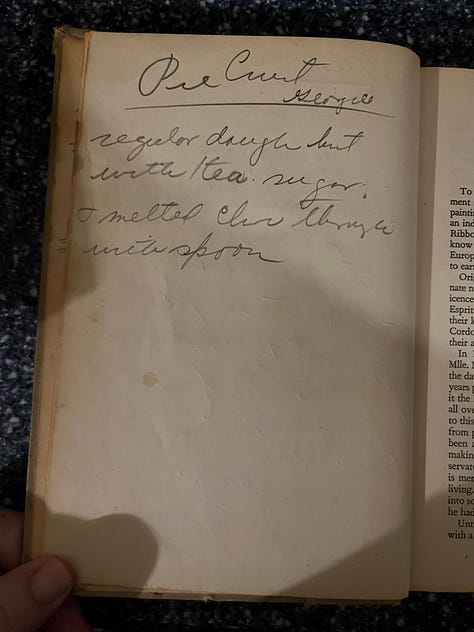

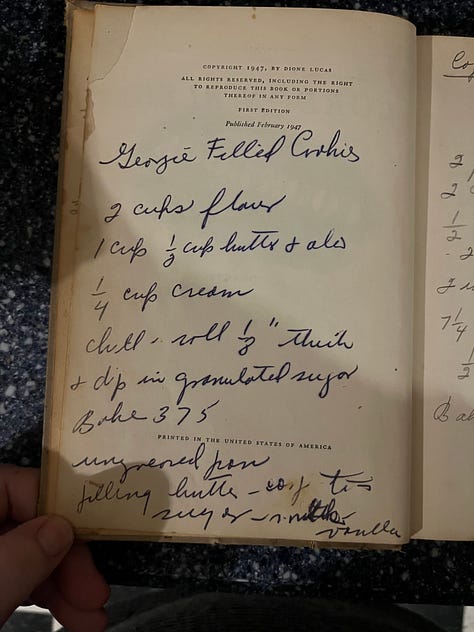



Mind you, I’ve had this cookbook on my shelf for at least seven years, but it was just an artifact. I hardly cook and when I do I get my recipes from a newer cookbook or the internet. Opening this up was a revelation. Just seeing her method for taking notes, the recipes she hand-wrote in in the margins, felt like I was seeing her in a new light. Not everyone feels comfortable writing in books. Books are sacred texts and how dare we encroach upon them with our own pen or pencil! Except, that’s not how I feel. I am a writer-in-the-margins-of-books. I am an underliner, a highlighter, an arrow-drawer.
I pulled down a few more cookbooks I’ve inherited, not entirely sure which I inherited from whom. I have some that belonged to another grandmother, and those are completely clean inside, save maybe a tiny note about a conversion equation. This makes it easy to tell which cookbook was whose, and which books were used versus which were gifts or novelty items.
I’ll be giving a workshop-slash-talk in April on journaling at the Upland Public Library and I am reminded of things that Marion Mitchell-Wilson once said about her own cookbooks and dinner guest notebooks, how those were a form of journaling too. They contain the notes about what she made when, the substitutions she made in the recipes, who is allergic to what, and how the recipes were received. She wrote about it in a column for Inlandia Literary Journeys, but that was more than ten years ago. (The tenth anniversary of her death is coming up in August.) I’m not a journaler per se, but I have looked back on old blog posts on my ancient but still findable WordPress site and they read like a diary. I have internet print outs of favorite recipes that are crinkled and stained with my handwritten notes.
Almost anything can be a record, which is all that a journal is. It’s a record of who you were, when. Even if that’s not how we think about them at the time that we’re writing them. Clues to be studied.
In the address book, there’s a curious other printed writing—not my grandmother’s loose cursive, but a slightly irregular but neat block printing. My grandfather’s? Yes, I think so. Grandpa Brad’s. And connections to people in the ceramics industry, like Fred Kaye, and the architect for his house, Ben Sherwood. Facts of their connection.
Maybe I won’t replace my scribbled-on-scratched-out-colored-in-the-margins address book. Maybe someday someone will pick it up and study me.
Probably not. But I feel less self-conscious about my messiness knowing that someone, someday, may find value in seeing how I really am and not the sanitized version of an unnecessarily neat rewrite.

